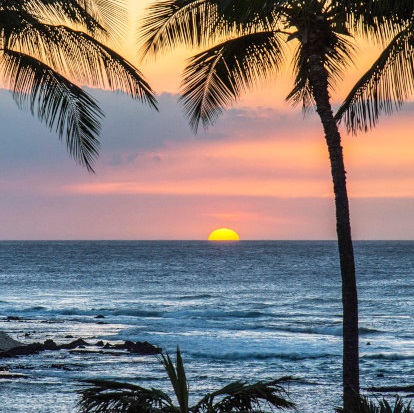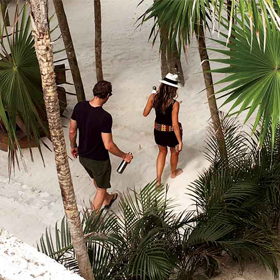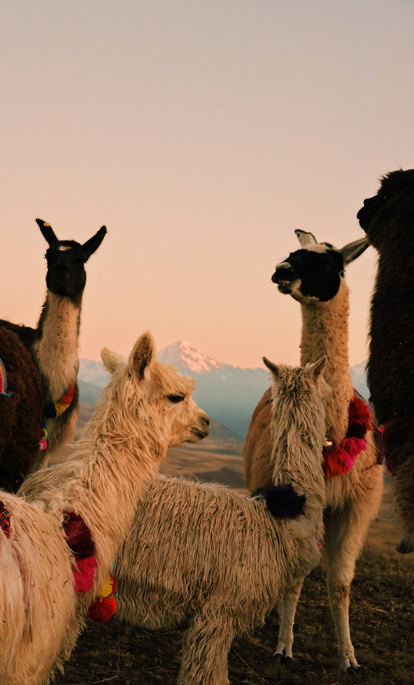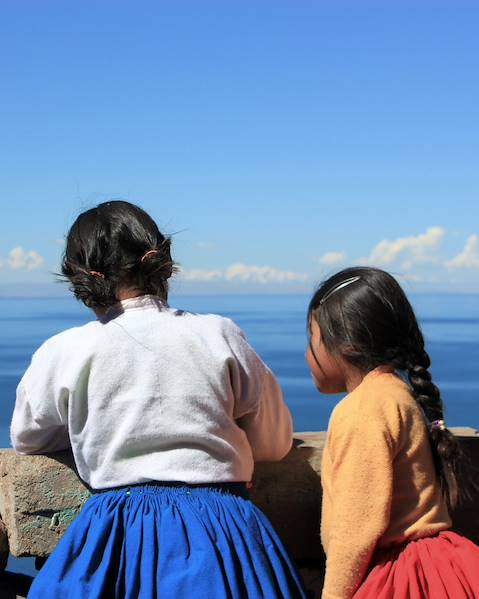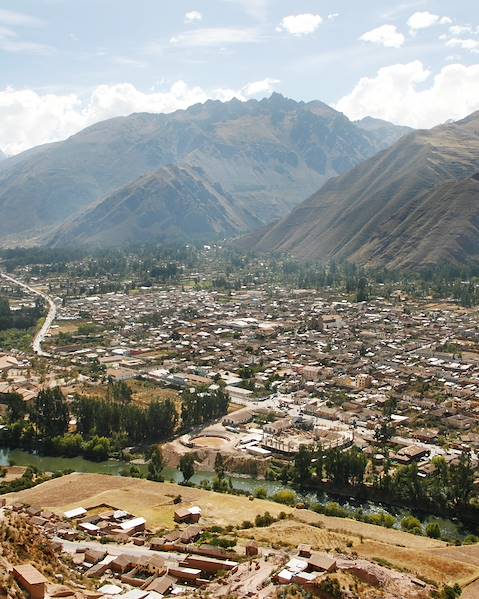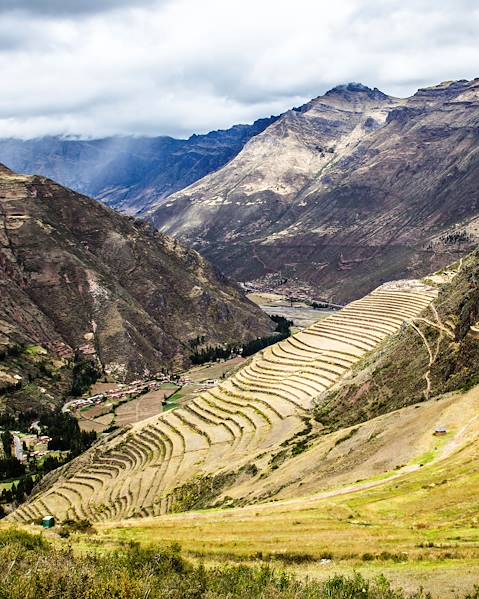Visit Machu Picchu by train
If the idea of a three day trek to reach the lost city of Machu Picchu doesn't appeal, then why not opt for the more comfortable train journey?
There are three different trains that tackle the winding journey up to Machu Picchu Pueblo - the local town below Machu Picchu. The first is the backpacker train, which very much does as it says on tin, and the second is the Vistadome train; a more expensive option where drinks and snacks are served on board and passengers are even treated to a fashion show during their descent!
For those seeking added luxury, we recommend the Hiram Bingham train, named after the explorer who discovered the famed Incan Citadel. Owned by Belmond, the interiors are elegantly decorated in the style of the 1920's Pullmans trains, and there is an observation carriage as well as two dining cars. On the way up to Machu Picchu, passengers are served a delicious three-course brunch, and spoiled with a four-course dinner of Peruvian delicacies on the way back.
Whichever option you decide to go for, this journey is a truly spectacular way to experience the Andean countryside. It begins at Poroy, near Cusco, early in the morning, or you can join later on at the fortress town of Ollantaytambo in the Sacred Valley. The trains' panoramic windows offer superb scenic views and wonderful photographic opportunities of sights such as ancient temples and the vast agricultural terraces of Jaquijahuana as the train snakes up towards the clouds its way past the raging Urubamba River.
Why We Love It
We recommend that you snap up a seat on the left hand side in order to take advantage of the best views on the way up.
One Day Inca Trail
Hike a section of the Inca Trail from a point known as Kilometre 104, because of its location on the road between Cusco and Machu Picchu.
There will be a dawn start from your hotel in Cusco to take the train from San Pedro station to KM104, arriving at around 10am.
After visiting the Chachabamba archaeological complex, begin to walk uphill for 5 miles, through magnificent scenery and accompanied by sweeping views of the Urubamba Valley. After approximately four hours' hiking, the trail arrives at the site of Wiñaywayna, at 2700m. This is an impressive complex made up of an agricultural centre with numerous terraces, a religious sector and an urban sector, and has a beautiful waterfall close by.
Wiñaywayna is where those who choose the 4 day/3 night trail will camp for their last night; it is about an hour's onward walking along steep jungle paths to Intipunku, or The Sun Gate, for your first - and a very famous - view of Machu Picchu.
Why We Love It
Best of both worlds, this option is ideal for those not keen on camping, but looking to arrive at the citadel on foot.
Discover the Amazon
If there was a way to explore a rarely visited area of Peru's Manu National Park, gain a once in a life time experience and give something back to the environment and wildlife at the same time, then Crees Tours is absolutely the way to discover the Amazon.
Peru's Manu National Park has become accessible to visitors through Crees Tours, a research-based organisation that has operated in this region for 10 years. Profits from tourism here fund valuable research undertaken by scientists and experts, alongside sustainability projects involving the local environment and communities.
Departing from Cusco, guests can travel through the high Andes towards the Sacred Valley, down into the cloud forest and the depths of the rainforest canopy. This area is a remote and relatively undiscovered part of the Amazon, promising real adventure and exceptional wildlife encounters.
Research and accommodation is based at the Manu Learning Centre, built in the style of the local Machiguenga tribe and set just above the river. Up to 36 guests can be comfortably housed in 'pods' linked by raised wooden walkways. The learning centre is an Amazonian Mecca, which creates a little something different for its guests. Even mealtimes are communal which makes for a real friendly atmosphere with researchers, volunteers and guests coming together throughout their stay to share stories and experiences. Alternatively the more intimate Romero lodge, with just eight en-suite rooms, can be reached by boat from the centre or by plane directly from Cusco; one highlight there is seeking the endangered giant river otter from the comfort of a catamaran.
From the moment guests arrive in Manu they are designated a private guide for the duration of their tour; these naturalist specialists have experience as park rangers and are proud to share their expert knowledge of the area and wildlife. Some are expert botanists or biologists, and can tailor excursions to the interests of the guests. Further to all that they have a great understanding of this UNESCO world heritage region.
These tours can appeal to anyone's journey, as each tour is bespoke, with many different itineraries and durations possible, many featuring a night in the Cloud Forest and all including a host of activities; excursions include privately guided walks, rafting, cycling, night walks, research trips and community visits. Manu is one of the most bio diverse regions on our planet owing to its geographical diversity, resulting in a vast array of flora and fauna for visitors to encounter. Over 13 primate species, black caiman and the elusive jaguar can all be spotted around the lodge. With the help of Crees' seasoned researchers and volunteers visitors can get involved in worthwhile conservation and research projects and gain hands-on experiences, viewing camera trap footage of the wildlife and collecting data.
Why We Love It
Environmental sustainability is a cornerstone of the ethos at Manu Learning Centre; solar power, gravity-fed water pumps and recycling all help to achieve this aim.
Food Tour with Penelope Alzamora
Peruvian food is so hot right now, and we offer the chance to enjoy a morning taste tour of the capital with chef Penelope Alzamora, a Liman local whose foodie parents and nanny introduced her to traditional Peruvian cuisine at an early age.
Penelope went on to culinary college and cooking school in Boston and San Francisco and now lives back in the boho chic district of Barranco which is where the tour begins. Penelope takes her guests around a local food market to buy the freshest local ingredients, from juicy peppers to the freshest fish, before returning to her home.
Next, the highlight: the chance to create (and eat/drink) some of Peru's classic dishes, from ceviche to pisco sour cocktails and other trademark cuisine, under Penelope's expert tutelage, and while she explains the context of Peruvian food in the country's history.
Why We Love It
There's never been a better excuse to enjoy a pisco sour at lunchtime, and then taste the fruits or your labours.
A Tour of Larco Museum With the Curator
The Larco Museum in Lima contains an astonishing 45,000 artefacts dating from the pre-Columbian (basically pre-European) period, and including an impressive collection of Inca crowns and other ornamental pieces decorated with gold and precious stones.
The collection itself is impressive, but we can arrange for you to see the highlights (45,000 pieces would take a while) in the erudite company of one of the Larco's curators.
Enjoy expert explanations of the beautiful precious metal collections, the ancient woven textiles and the religious and cultural history of Peru and the wider region before the arrival of the conquistadors. In another part of the museum the large and extremely graphic collection of erotic pottery needs rather fewer explanatory comments.
Why We Love It
The permanent exhibition in the Gold and Silver Gallery is the - often quite literally - the crowning glory of the Larco collection, and hearing about the ornaments' construction and provenance from a master in her field really brings everything vividly to life.
Tour of the Islands on Lake Titicaca
Lake Titicaca is the world's highest navigable lake, which makes it a winner in our books, and that's before you even explore the floating Uros Islands.
These islands are made entirely from totora, an indigenous reed that grows in the lake's shallows and which has been used to create these extraordinary man-made islands and the boats the inhabitants use to navigate around the lake. Spend time with the charming locals and a guide who can explain their traditional way of life and customs.
Next stop is the island of Taquile, a more traditional (ie: static) island where the local Quechua people's traditions continue in much the same way they have for centuries. The locals, or Taquilenos, are expert weavers as well as exceptional hosts, and we defy you to come away without having bought some of their brightly coloured clothing. The island has additional appeal in the form of Incan terraces that are still in use today for crops as well as wild flower meadows.
The final island stop is Amantani, home to beautiful cantata flowers and a place of pilgrimage and worship since pre-Columbian times. Today Andean priests known as Pacos still perform ceremonies at the Pachamama and Pachatata sanctuaries, maling offerings to the earth and the sacred lake.
Why We Love It
Spend time on the extraordinary Uros floating Islands, which local communities originally built as defensive retreats but on which they now live permanently.


